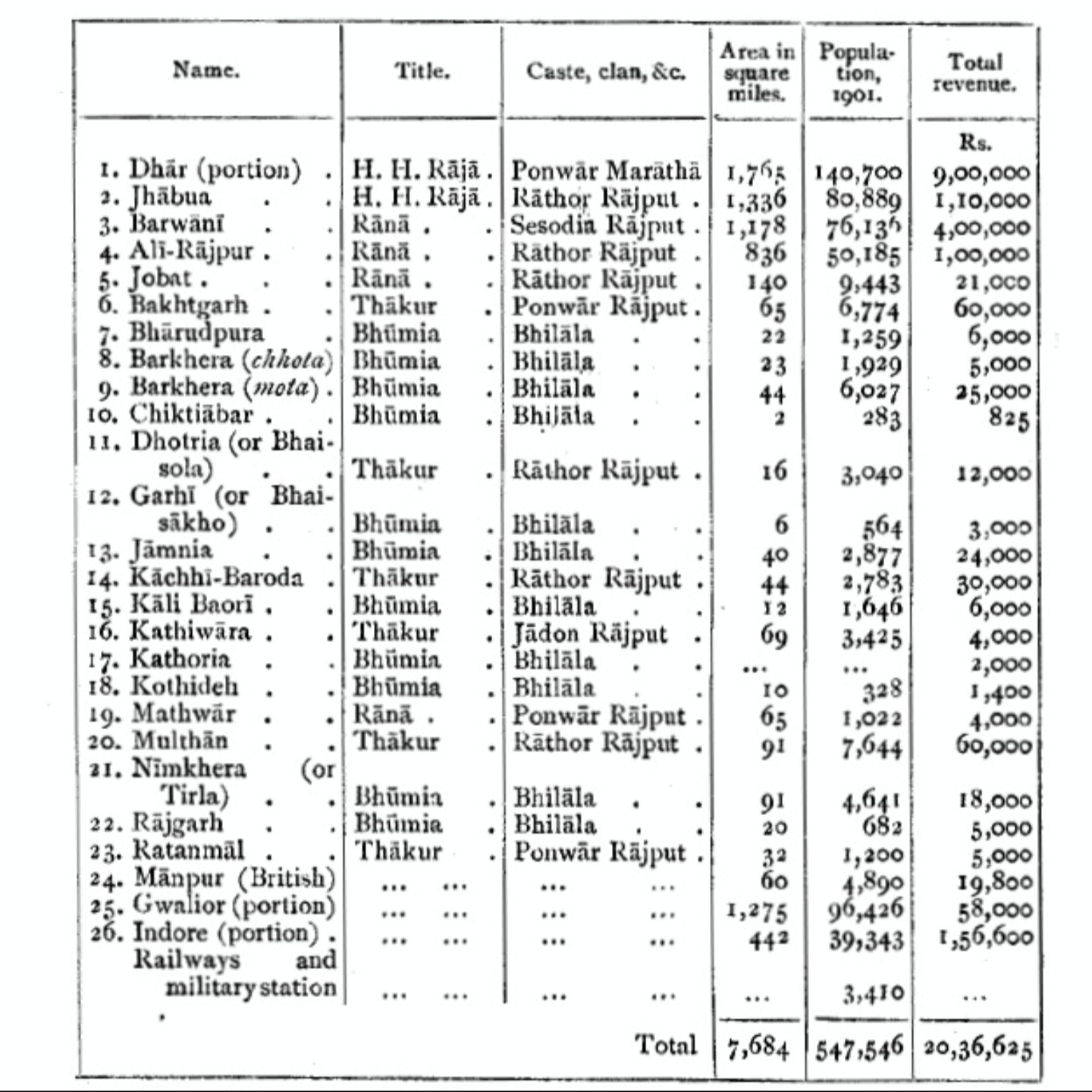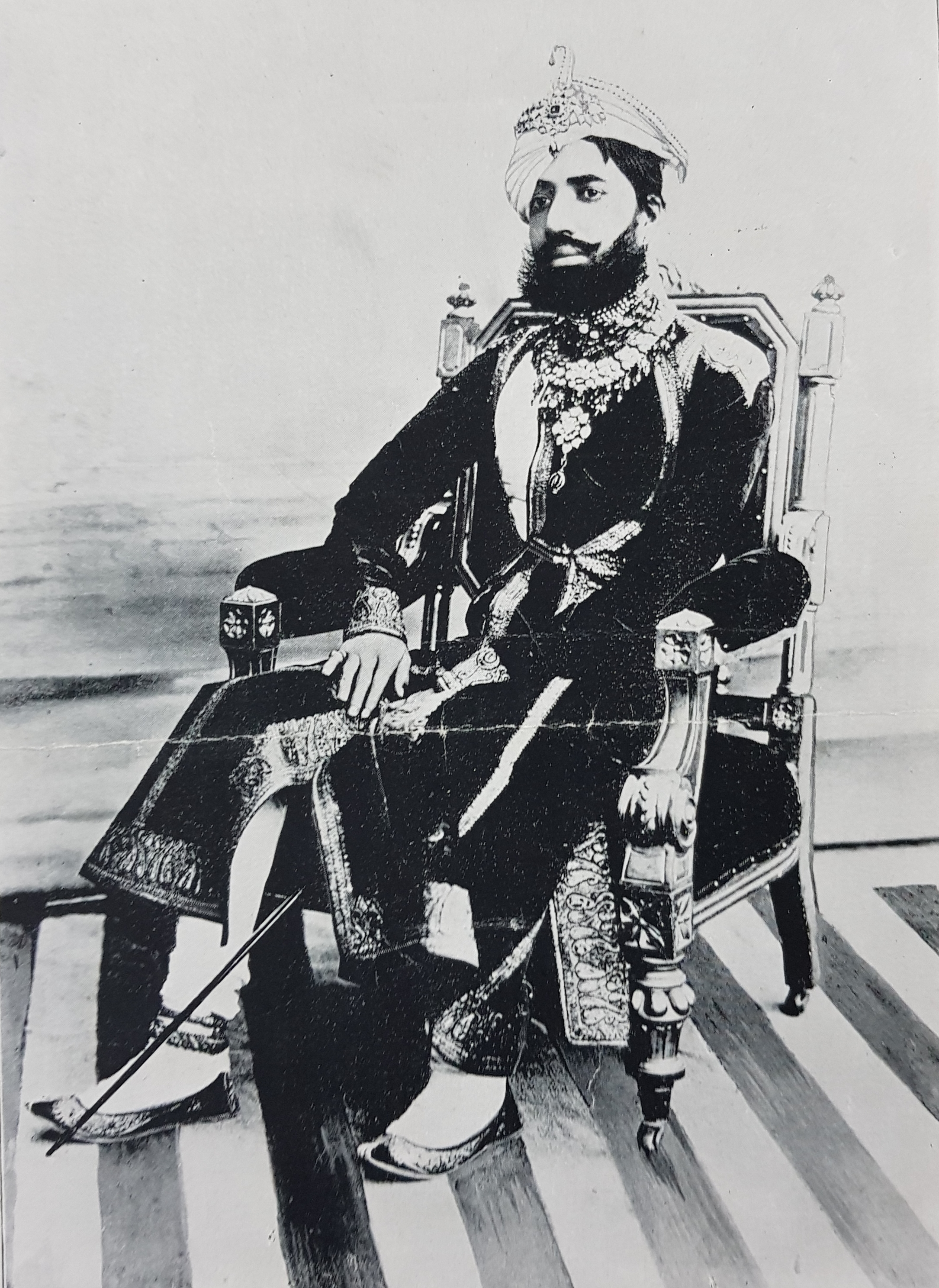|
Multhan
Multhan is a village in the Dhar district of Madhya Pradesh. School's in Multhan Government Higher Secondary School, Jahwar Navoday Vidhyalay, Bharat Vidhiya Niketan History During British Raj, the State was in the Badnawar pargana. The chief was a Rathore rajput, had the title of thakur. Bharat Singh, who was born in 1893 and succeeded on adoption in 1901, was the second son of Raja Jashwant Singh II of Sailana State Sailana State was an 11 gun salute princely state in India, part of the Malwa Agency of Central India during the British Raj. The state enjoyed an estimated revenue of Rs.5,00,000. History Sailana State was founded by Raja Jai Singh, great-gr ....Genealogy, Archive, Image: Interpreting Dynastic History in Western India p.7/ref> The residence of the chief is the town of Multhan. Area 91 square miles. Population was 7,644. Rulers * 1691 - 1709 Maharaj Anup Singh ji * 1709 - 17.. Maharaj Indra Singh ji * 17.. - 17.. Maharaj Raj ... [...More Info...] [...Related Items...] OR: [Wikipedia] [Google] [Baidu] |
Bhopawar Agency States And Estates
Bhopawar Agency was a sub-agency of the Central India Agency in British India with the headquarters at the town of Bhopawar, so the name. Bhopawar Agency was created in 1882 from a number of princely states in the Western Nimar and Southern Malwa regions of Central India belonging to the former Bhil Agency and Bhil Sub-agency with the capitals at Bhopawar and Manpur. The agency was named after Bhopawar, a village in Sardarpur tehsil, Dhar District of present-day Madhya Pradesh state. Manpur remained a strictly British territory. The other chief towns of this region were: Badnawar, Kukshi, Manawar and Sardarpur, Chadawad Estate, Dattigaon. The mighty Vindhya and Satpura ranges crossed the territory of the agency roughly from east to west, with the fertile valley of the Narmada River lying between them. The agency also included the "Bhil Country", inhabited by the Bhil people. History At the time of its 1882 establishment, the agency had a total area of , and its population wa ... [...More Info...] [...Related Items...] OR: [Wikipedia] [Google] [Baidu] |
Badnawar
Badnawar (or Badnavar) is a Town, former pargana and a Nagar Parishad of the Dhar district in the state of Madhya Pradesh, India. This is a tehsil place having 170 villages. Badnawar is around 95 km from Indore - the business capital of Madhya Pradesh. in AD 783. It remained a major Jain center until mid 13th century. Schools * K C Saraf Vidhyalaya * Kashyap Vidhya Peeth * Unnati Public School * Nandaram Chopra Higher Secondary School * Unnati Academy * Jagrati Vidhya Mandir * Suraj Vidhya Vihar * Shri Sardar Patel Vidhyapeeth * Pratap Vidhya Niketan * Shri Aaiji Public School * Jain Public School Geography Badnawar is located at . It has an average elevation of 506 metres (1,660 feet). History Acharya Jinasena started the composition of Harivamsa Purana here in AD 783. Jayavarmadeva, A Paramara ruler, had issued a grant mentioning Vardhamanapur, which was found at Ujjain. Some of the ancient Jain images found here are now displayed in the Digambar Jain Muse ... [...More Info...] [...Related Items...] OR: [Wikipedia] [Google] [Baidu] |
Dhar District, India
Dhar district is a district of Madhya Pradesh state in central India. The historic town of Dhar is administrative headquarters of the district. The district has an area 8,153 km2. It is bounded by the districts of Ratlam to the north, Ujjain to the northeast, Indore to the east, Khargone (West Nimar) to the southeast, Barwani to the south, Jhabua and Alirajpur to the west. It is part of the Indore Division of Madhya Pradesh. The population of the district is 2,185,793 (2011 census), an increase of 25.60% from its 2001 population of 1,740,329. Pithampur is a large industrial area comes under Dhar District. Kukshi is the largest tehsil of the district. Geography The Vindhya Range runs east and west through the district. The northern part of the district lies on the Malwa plateau. The northwestern portion of the district lies in the watershed of the Mahi River and its tributaries, while the northeastern part of the district lies in the watershed of the Chambal River, which dr ... [...More Info...] [...Related Items...] OR: [Wikipedia] [Google] [Baidu] |
Jashwant Singh II
H.H. Raja Sir Jashwant Singh II K.C.I.E. (1864–1919) was the ruler of the princely state of Sailana State, India from year 1895 to 1919. He was the son of Bhawani Singh of Semlia, a jagirdar of Sailana State and a distant cousin of Raja Dule Singh of Sailana. He was educated in the Rajkumar College, Indore. Succeeded on the death of his father to the Semlia jagir of Sailana in 1876. Jaswant Singh was adopted by Raja Dule Singh and was made the Yuvaraj (Crown prince) of Sailana in 1884 (recognised by the GOI, 1885). He transferred Semlia to his younger brother in 1888. Appointed as Administrator of Sailana in 1893, and assumed responsibility for the government. Succeeded on the death of his adopted father on 11 October 1895. Ascended the gadi, at the Raj Mahal, Sailana, 13 October 1895. Invested with full ruling powers, 23 December 1895. Jaswant Singh II inherited a state which was struck by poverty, corruption and famine. He introduced many reforms and brought the state to a ... [...More Info...] [...Related Items...] OR: [Wikipedia] [Google] [Baidu] |
Sailana State
Sailana State was an 11 gun salute princely state in India, part of the Malwa Agency of Central India during the British Raj. The state enjoyed an estimated revenue of Rs.5,00,000. History Sailana State was founded by Raja Jai Singh, great-grandson of Maharaja Ratan Singh, founder of Ratlam State. It is a branch of the Rathore house. In 1716 Jai singh took revenge against his uncle for the murder of his father, he killed him in a pitched battle at sagode and secured Ratlam for his elder brother. The two brothers then divided the state between themselves. Jai singh's capital was initially at Raoti. He built Sailana as his new capital in 1736. During this period the Maratha influence in central India had been growing and several states had been annexed or forced to pay heavy tributes to the Peshwa. However Jai singh had the wisdom to form alliances with the Maratha officials, he helped the Peshwa agent Ambaji Pant Trimbak Purandare to collect tribute in Malwa and used the situa ... [...More Info...] [...Related Items...] OR: [Wikipedia] [Google] [Baidu] |
Princely States Of Madhya Pradesh
A prince is a male ruler (ranked below a king, grand prince, and grand duke) or a male member of a monarch's or former monarch's family. ''Prince'' is also a title of nobility (often highest), often hereditary, in some European states. The female equivalent is a princess. The English word derives, via the French word ''prince'', from the Latin noun , from (first) and (head), meaning "the first, foremost, the chief, most distinguished, noble ruler, prince". Historical background The Latin word (older Latin *prīsmo-kaps, literally "the one who takes the first lace/position), became the usual title of the informal leader of the Roman senate some centuries before the transition to empire, the '' princeps senatus''. Emperor Augustus established the formal position of monarch on the basis of principate, not dominion. He also tasked his grandsons as summer rulers of the city when most of the government were on holiday in the country or attending religious rituals, and, ... [...More Info...] [...Related Items...] OR: [Wikipedia] [Google] [Baidu] |
Rajput Princely States
Rajput (from Sanskrit ''raja-putra'' 'son of a king') is a large multi-component cluster of castes, kin bodies, and local groups, sharing social status and ideology of genealogical descent originating from the Indian subcontinent. The term Rajput covers various patrilineal clans historically associated with warriorhood: several clans claim Rajput status, although not all claims are universally accepted. According to modern scholars, almost all Rajput clans originated from peasant or pastoral communities. Over time, the Rajputs emerged as a social class comprising people from a variety of ethnic and geographical backgrounds. During the 16th and 17th centuries, the membership of this class became largely hereditary, although new claims to Rajput status continued to be made in the later centuries. Several Rajput-ruled kingdoms played a significant role in many regions of central and northern India from seventh century onwards. The Rajput population and the former Rajput states ... [...More Info...] [...Related Items...] OR: [Wikipedia] [Google] [Baidu] |



